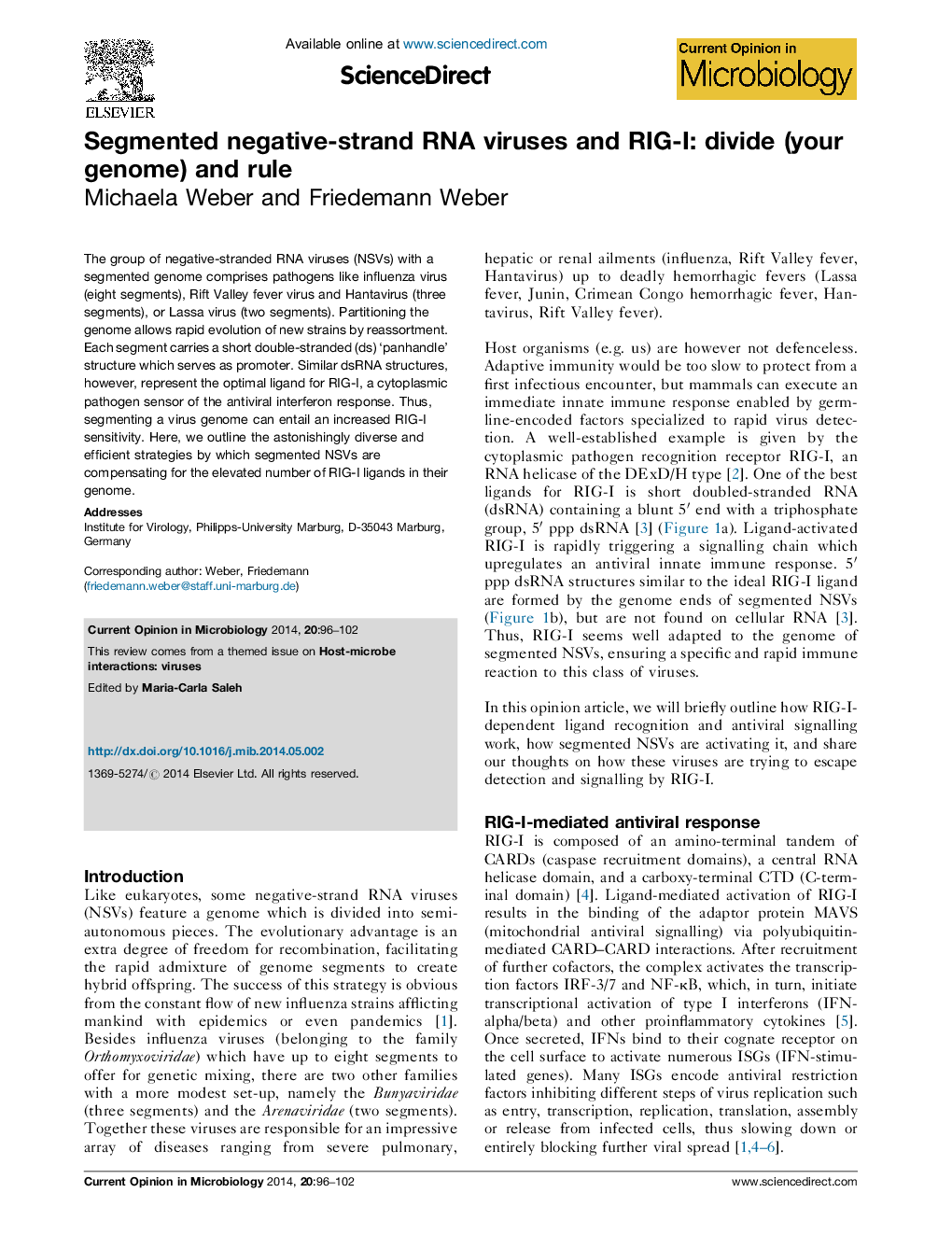| Article ID | Journal | Published Year | Pages | File Type |
|---|---|---|---|---|
| 6131876 | Current Opinion in Microbiology | 2014 | 7 Pages |
Abstract
The group of negative-stranded RNA viruses (NSVs) with a segmented genome comprises pathogens like influenza virus (eight segments), Rift Valley fever virus and Hantavirus (three segments), or Lassa virus (two segments). Partitioning the genome allows rapid evolution of new strains by reassortment. Each segment carries a short double-stranded (ds) 'panhandle' structure which serves as promoter. Similar dsRNA structures, however, represent the optimal ligand for RIG-I, a cytoplasmic pathogen sensor of the antiviral interferon response. Thus, segmenting a virus genome can entail an increased RIG-I sensitivity. Here, we outline the astonishingly diverse and efficient strategies by which segmented NSVs are compensating for the elevated number of RIG-I ligands in their genome.
Related Topics
Life Sciences
Immunology and Microbiology
Microbiology
Authors
Michaela Weber, Friedemann Weber,
